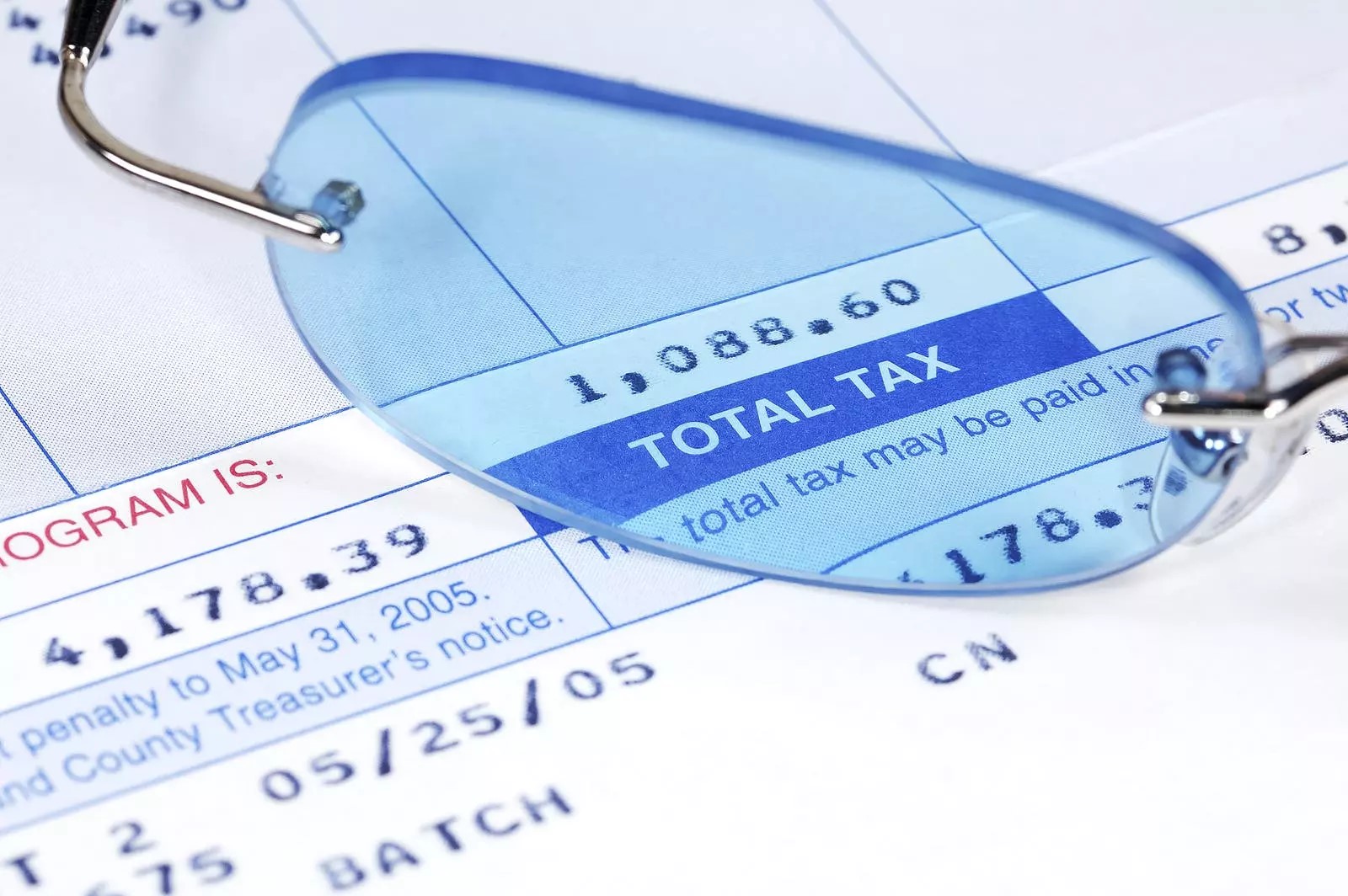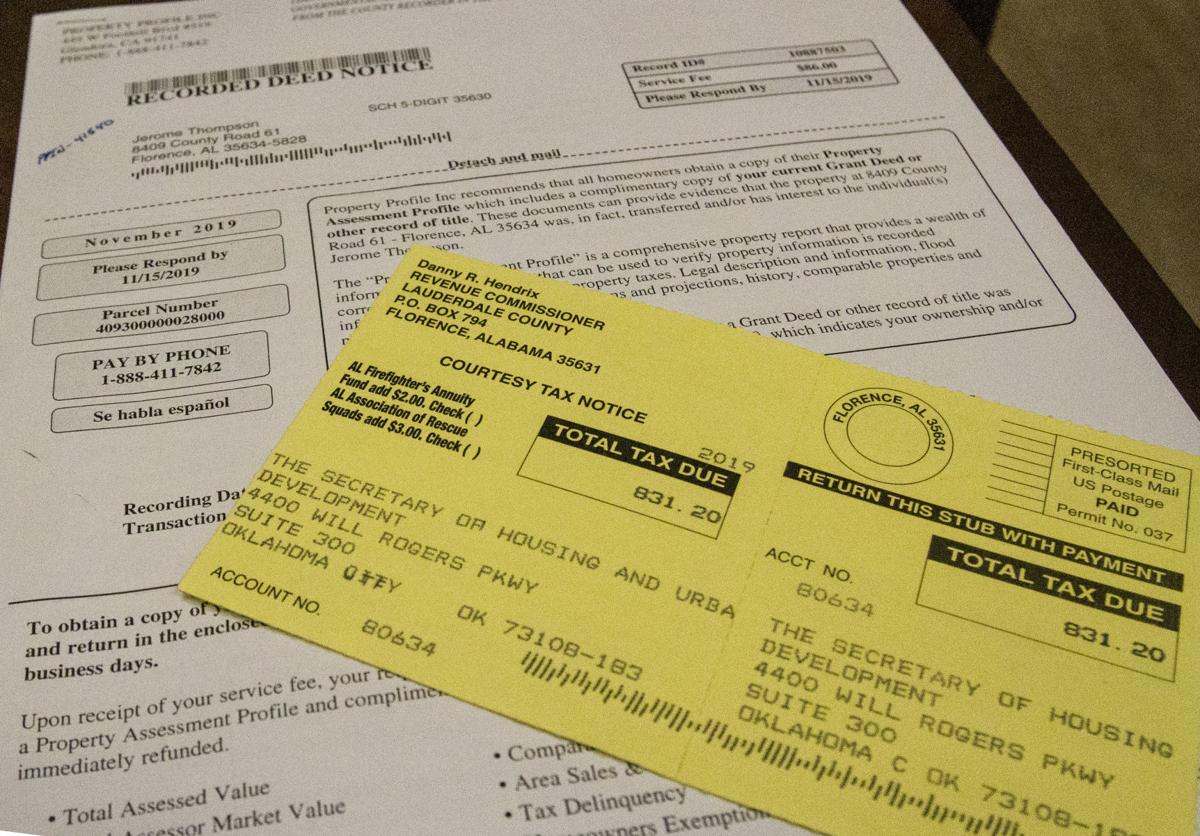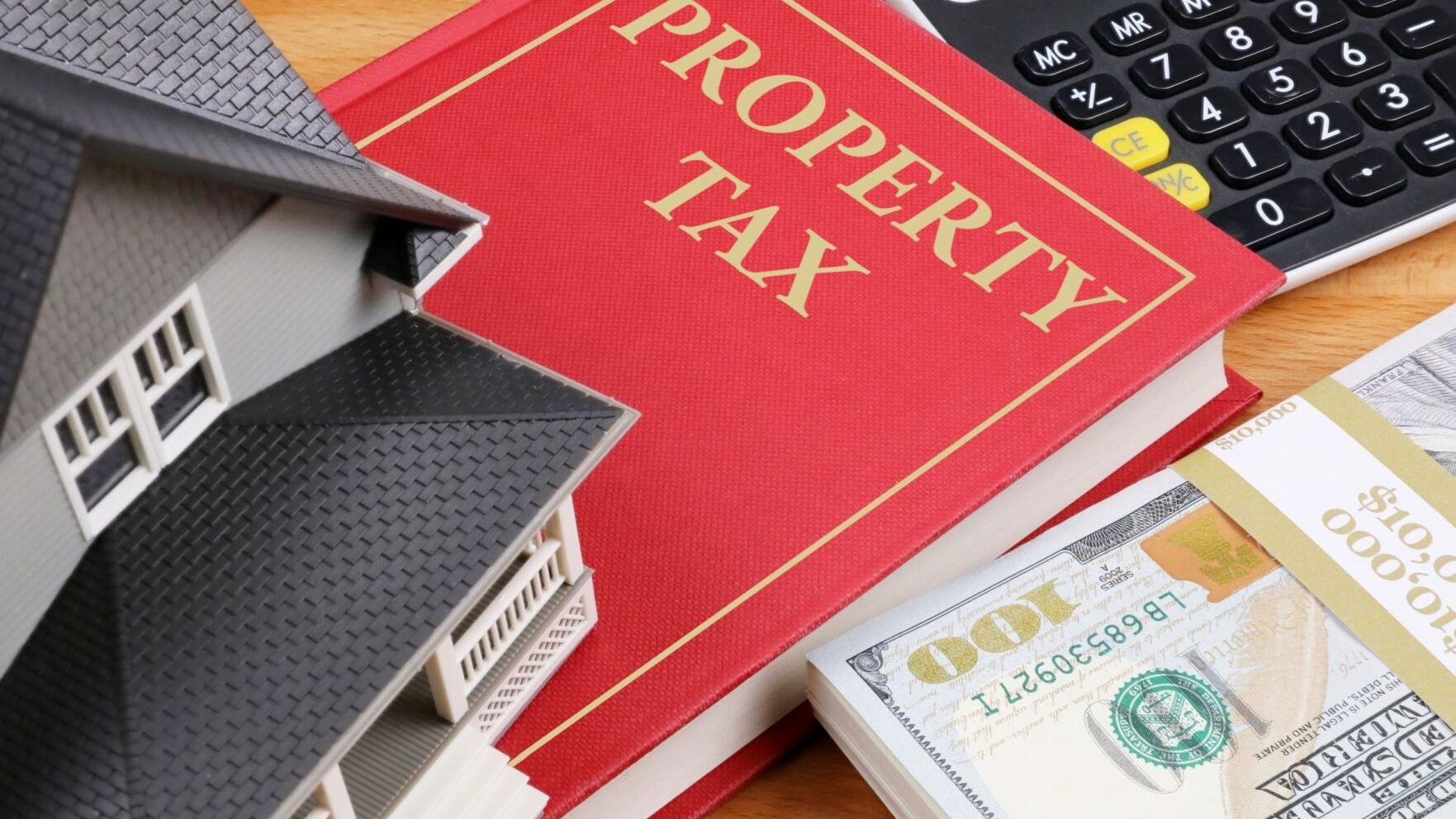Home>Home Maintenance>How Improvements Are Determined In Property Assessment


Home Maintenance
How Improvements Are Determined In Property Assessment
Modified: March 6, 2024
Learn how improvements in property assessment are determined and the importance of home maintenance for maintaining accurate assessments.
(Many of the links in this article redirect to a specific reviewed product. Your purchase of these products through affiliate links helps to generate commission for Storables.com, at no extra cost. Learn more)
Introduction
Welcome to the world of property assessment! If you’re a homeowner or real estate enthusiast, understanding how property assessments work can be essential. Property assessment is a crucial process that determines the value of a property for tax purposes. It involves evaluating various factors to determine the fair market value of a property.
Property assessment plays a significant role in determining property taxes and can have a significant impact on homeowners and communities. In this article, we will delve into the intricacies of property assessment, exploring the factors considered in the assessment process, the methods used, the role of assessors, and the challenges they face. Let’s jump right in!
Key Takeaways:
- Property assessment determines the value of homes for taxes. Factors like size, condition, and location are considered. Assessors use methods like sales comparison and income approach to make fair evaluations.
- Assessors face challenges like data accuracy and market changes. Property owners can appeal assessments. Transparency and fairness are crucial for a balanced tax system.
Understanding Property Assessment
Before we dive into the details, let’s start by understanding what property assessment is all about. Property assessment is the process of determining the value of a property for taxation purposes. It involves evaluating various factors to arrive at the fair market value of a property.
The primary purpose of property assessment is to ensure that property taxes are levied fairly and accurately. The assessment helps in distributing the tax burden equitably among property owners based on the value of their properties. Additionally, property assessment provides the government with a reliable means to generate revenue to fund public services such as schools, infrastructure, and emergency services.
Accurate property assessment is of utmost importance for several reasons. Firstly, it ensures fairness in the tax system. Property owners should pay their fair share of taxes based on the value of their properties. Secondly, accurate property assessment helps maintain the overall stability of the real estate market. It serves as a benchmark for property values, providing prospective buyers, sellers, and lenders with reliable information.
Moreover, accurate property assessment plays a crucial role in determining the allocation of public resources. Local governments rely on property assessments to determine the funding needs for various services and allocate resources accordingly. For example, areas with higher property values may require more funding for schools or law enforcement.
Lastly, accurate property assessment contributes to the financial well-being of homeowners. Inaccurate assessments can result in homeowners paying higher property taxes than they should, putting their financial stability at risk. Therefore, ensuring precise property assessments is in the best interest of both homeowners and the community as a whole.
Factors Considered in Property Assessment
When determining the value of a property, various factors come into play. Assessors take into consideration several key elements to arrive at an accurate assessment. Here are some of the primary factors considered during the property assessment process:
- Market value of the property: The market value of a property is the price it would fetch in an open and competitive real estate market. Assessors analyze recent sales of similar properties in the area to assess the market value of the property being evaluated.
- Location and neighborhood: The location of a property has a significant impact on its value. Assessors consider factors such as proximity to amenities, schools, transportation, and the overall desirability of the neighborhood.
- Size and square footage: The physical size of a property, including both the land and the buildings on it, is a crucial factor in its assessment. Assessors measure the square footage of the property to determine its value.
- Condition and age of the property: The condition and age of the property are important considerations. Assessors evaluate the overall condition of the property, including the quality of construction, maintenance, and any renovations or updates that have been made.
- Special features and amenities: Unique features and amenities of a property can significantly impact its value. Assessors consider features such as swimming pools, fireplaces, updated kitchens, and bathrooms when evaluating the property.
By assessing these factors, assessors can develop a comprehensive understanding of the property’s value. It’s important to note that the weightage given to each factor may vary based on local market conditions and jurisdictional regulations. Assessors aim to assess properties accurately while considering all relevant factors to ensure fairness in the assessment process.
Methods Used in Property Assessment
Assessors employ various methods to determine the value of a property. These methods help ensure a comprehensive and accurate assessment. Let’s explore the three primary methods used in property assessment:
- Sales comparison approach: This method involves analyzing recent sales of similar properties in the area to ascertain the value of the property being assessed. Assessors look for properties with similar characteristics, such as size, location, and condition, and compare their sale prices to determine the value of the subject property.
- Cost approach: The cost approach determines the value of a property by considering the cost of replacing it with a similar property. Assessors estimate the cost of the land and the cost of constructing the property, accounting for depreciation, and arrive at the property’s value. This approach is often used for newer properties or properties without comparable sales data.
- Income approach: The income approach is predominantly used for evaluating commercial or rental properties. Assessors calculate the property’s value based on its income-generating potential. This method takes into account factors such as rental income, expenses, vacancy rates, and prevailing market capitalization rates.
While these three methods are commonly used, assessors often employ a combination of methods to ensure a more accurate assessment. The choice of method will depend on factors such as the property type, market conditions, and availability of data.
It is important to note that these methods are not foolproof and rely on the accuracy of the data available. Assessors may also consider adjustments for factors such as location, condition, and market trends to arrive at a more precise assessment.
When determining improvements in property assessment, consider factors such as renovations, additions, and upgrades that increase the value of the property. Keep records of all improvements for accurate assessment.
Role of Assessors in Determining Improvements
Assessors play a crucial role in the property assessment process. Their responsibilities go beyond simply determining the value of a property. Let’s take a closer look at the role of assessors in determining improvements:
Responsibilities of assessors: Assessors have the responsibility of accurately and fairly assessing the value of properties within their jurisdiction. They need to stay up-to-date with local market trends, property values, and any changes in legislation or regulations that could impact assessments.
Data collection and analysis: Assessors collect and analyze a plethora of data to make informed assessments. This includes property sales data, building permits, property characteristics, and market trends. By analyzing this data, assessors can determine how property improvements impact the overall value.
Site visits and inspections: Conducting site visits and inspections is a vital part of the assessor’s role. Assessors physically examine properties to verify their characteristics, condition, and any improvements or changes that have been made. These site visits allow assessors to gather accurate information and make informed assessments.
Determining property improvements: Assessors take into account any improvements made to a property when determining its value. Improvements can include renovations, additions, or any other changes that enhance the property. Assessors consider the quality and impact of these improvements on the property’s value. They need to carefully evaluate whether the improvements have resulted in an overall increase in the property’s worth.
Assessors rely on their expertise, knowledge of the local market, and technical skills to ensure accurate assessments of property improvements. It is their role to make fair and informed judgments about the value that these improvements add to the property.
Overall, the assessors’ role is essential in maintaining fairness, accuracy, and consistency in property assessments. Their expertise and diligence play a vital role in determining the value of properties, including any improvements made to them, ensuring a fair tax system for property owners and governments alike.
Challenges and Limitations in Property Assessment
While property assessment is a crucial process, it comes with its fair share of challenges and limitations. Assessors face various obstacles that can impact the accuracy and fairness of assessments. Let’s explore some of the key challenges:
Lack of accurate data: Obtaining accurate and up-to-date data can be a challenge for assessors. Access to reliable sales data, building permits, and property characteristics can vary, making it difficult to gather the necessary information. Inaccurate or incomplete data can lead to incorrect assessments and potentially unfair taxation.
Subjectivity and bias: Assessments are subjective to some extent, as they rely on the judgment and expertise of assessors. Personal biases or subjective interpretations of data can inadvertently influence the assessment process. Assessors must strive to remain impartial and adhere to standardized valuation methods to maintain fairness and consistency.
Changing market conditions: Property values are not static and can change due to market conditions such as fluctuations in demand, economic trends, and changes in neighborhood dynamics. Assessors must stay informed about these changes to accurately reflect the property’s value. However, rapid market changes can sometimes make it challenging to keep assessments up-to-date.
Legal and ethical considerations: Assessors must comply with legal and ethical guidelines when conducting assessments. They need to ensure that assessments are carried out within the bounds of the law, adhering to regulations and procedures. Understandably, this can create complexities and challenges when balancing legal requirements with accurate assessments.
Despite these challenges, assessors continuously strive to make fair and accurate assessments. They undergo training, stay abreast of market trends, and use appropriate valuation methods and tools to mitigate these limitations. Moreover, assessors are accountable for their assessments and need to be transparent about their methodologies and any limitations or constraints faced during the assessment process.
By recognizing these challenges and working towards mitigating them, assessors can enhance the accuracy and fairness of property assessments, thereby promoting confidence and trust in the tax system.
Evaluation of Property Assessment
Property assessments are subject to evaluation to ensure accuracy, fairness, and transparency in the assessment process. Let’s explore some key aspects of evaluating property assessments:
Appeals and reassessment process: Property owners have the right to appeal their assessments if they believe there are errors or discrepancies. The appeals process allows for an independent review of the assessment and provides an opportunity for property owners to present their case. Reassessment may occur if significant changes are made to the property or if there are grounds to question the accuracy of the initial assessment.
Public input and transparency: Public input is a crucial aspect of property assessment evaluation. It allows for open dialogue and ensures that the assessment process is transparent. Assessing authorities may hold public hearings or solicit feedback to gather input from property owners and stakeholders. Transparency, including providing access to assessment records and methodologies, builds trust and fosters a greater understanding of the assessment process.
Accuracy and fairness of assessments: The accuracy and fairness of assessments are fundamental to the evaluation process. Assessors are expected to use reliable valuation methods, gather accurate data, and apply consistent and equitable standards when assessing properties. Regular reviews and audits of assessments help identify any issues or discrepancies, ensuring that assessments align with market realities and meet legal requirements.
Evaluation of property assessments aims to enhance the efficacy of the assessment process and address any concerns or discrepancies that may arise. By incorporating mechanisms for appeals, public input, and transparency, the evaluation process allows for the correction of errors, ensures a fair and equitable tax system, and builds trust between assessors, property owners, and the community.
It is important to note that property assessment evaluation is an ongoing process, continuously evolving to meet the needs and demands of the real estate market and compliance with regulatory frameworks. Regular evaluation and improvement of the assessment process contribute to a fair and efficient tax system, benefiting both property owners and the wider community.
Conclusion
Property assessment is a critical process that determines the value of properties for taxation purposes. Understanding this process is essential for homeowners, real estate professionals, and local governments alike. Throughout this article, we have explored the various aspects of property assessment, including its definition, purpose, and importance.
Property assessment involves considering several factors, such as the market value, location, size, condition, and special features of a property. Assessors use different methods, such as the sales comparison approach, cost approach, and income approach, to arrive at an accurate assessment.
The role of assessors in determining property improvements is crucial. Assessors are responsible for data collection and analysis, conducting site visits and inspections, and considering the impact of property improvements on value. Although they face challenges such as lack of accurate data, subjectivity, changing market conditions, and legal and ethical considerations, assessors strive to make fair and impartial assessments.
Evaluation of property assessments involves the appeals and reassessment process, public input and transparency, and ensuring accuracy and fairness. This evaluation ensures that property owners have a means to challenge assessments, promotes transparency and accountability, and maintains the integrity of the assessment process.
In conclusion, property assessment is a complex and multifaceted process. Accurate and fair assessments are crucial for maintaining a balanced tax system and providing accurate information to property owners, buyers, and lenders. By continuously evaluating and improving the assessment process, assessors can enhance the accuracy and fairness of property assessments, which ultimately benefits both property owners and the community.
Frequently Asked Questions about How Improvements Are Determined In Property Assessment
Was this page helpful?
At Storables.com, we guarantee accurate and reliable information. Our content, validated by Expert Board Contributors, is crafted following stringent Editorial Policies. We're committed to providing you with well-researched, expert-backed insights for all your informational needs.















0 thoughts on “How Improvements Are Determined In Property Assessment”